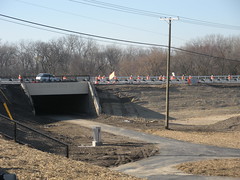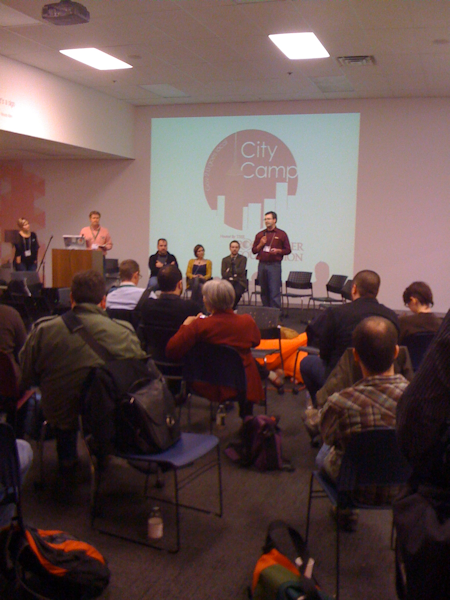Today I had the privilege of attending our APWA Chapter meeting and then touring the Stearns Road Corridor Construction Project. Tours are offered a few times a year as a regular feature of APWA meetings and always provide great information. This particular tour offered a unique opportunity to visit the construction site of a $165 million project – definitely a significant size for our local area. Primary work included relocation of 4.6 miles of roadway, a new bridge over the Fox River, the widening and resurfacing of several intersecting routes, multi-use paths and stormwater facilities.
During our drive through the site, an engineer for the project pointed out specific areas of interest and shared with us some of the challenges they faced. The project team also used several forms of media to communicate to the public information about construction. Kane County set up a page on their Website at http://www.co.kane.il.us/dot/foxBridges/stearnsRd.aspx. And they posted two related videos on their YouTube Channel which can be viewed at http://www.youtube.com/user/KDOTTransportation. A dedicated Website was also created at http://stearnsroad.com for this specific project.
There was also one additional unique piece of information our tour guide shared with us that caught my attention. He mentioned the posting online of videos related to extraterrestrial activity associated with the project. Well, if you're like me, that's not something you hear everyday about a construction job. After I got home and Googled "Stearns Road" and "UFO" I found the YouTube videos he was talking about. Now, we all have had projects where people accuse construction activities of damaging their foundation, causing mysterious sinkholes in areas of their yards not anywhere near our sites, cracking their sewer or water pipes, flooding their basements, but until now, I had not yet heard of someone accusing construction of hiding UFO activity. I embedded the first of the four movies posted to date so you can hear for yourself. And feel free to post your own out of this world accusations you may have heard on your own jobs!



